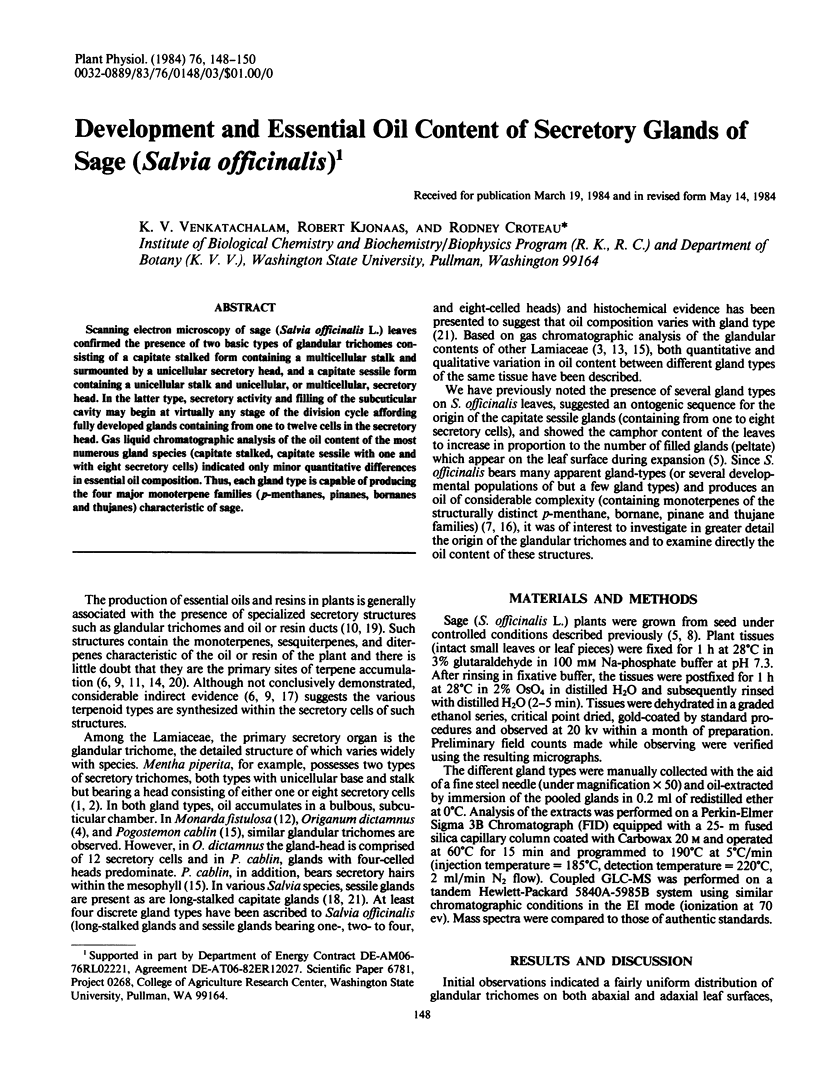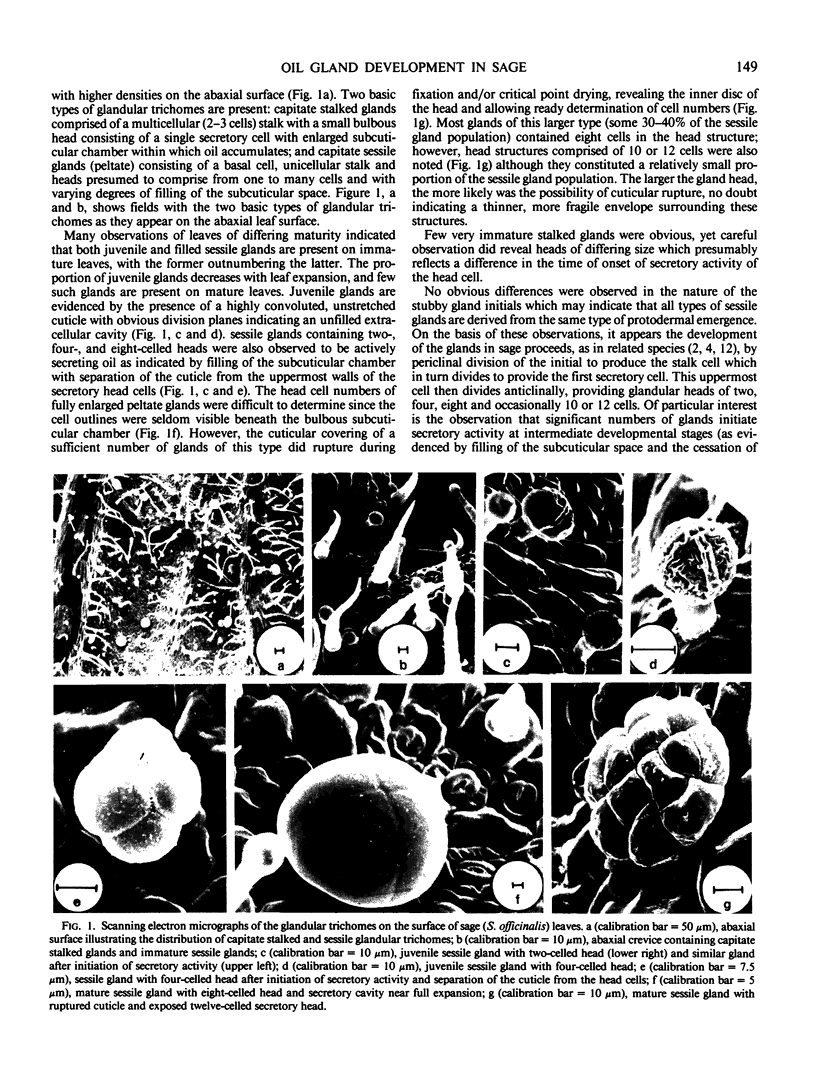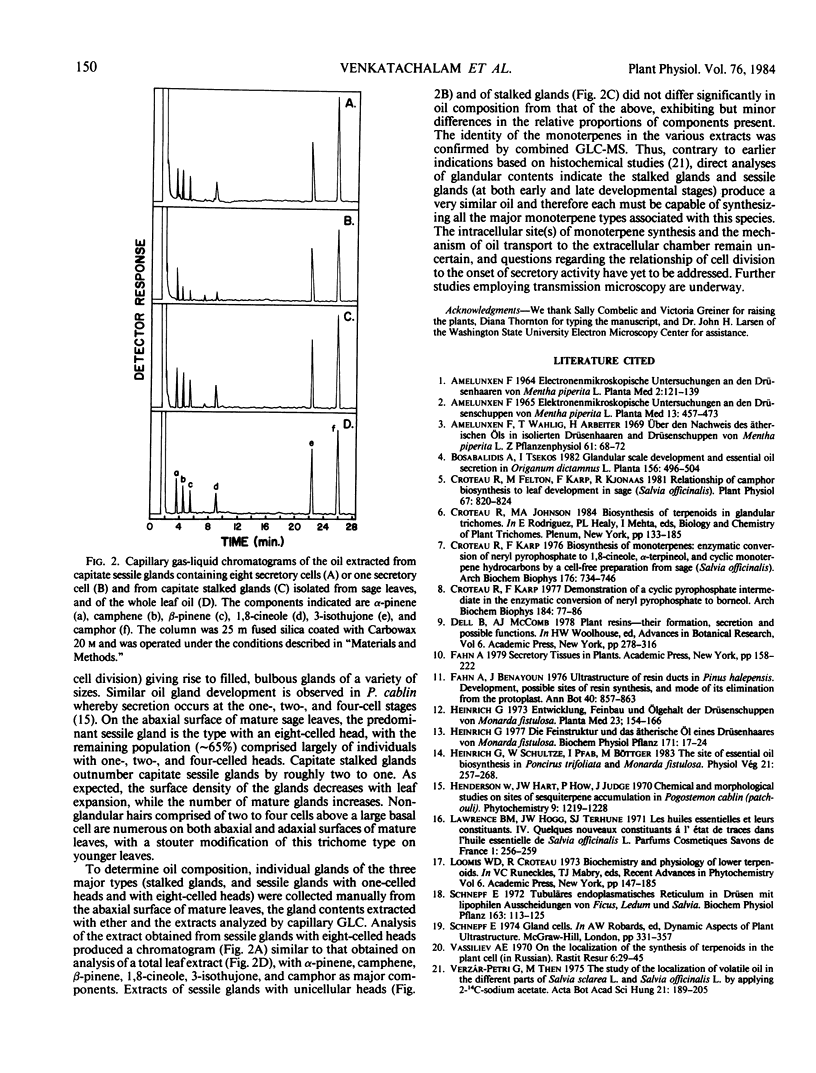Abstract
Scanning electron microscopy of sage (Salvia officinalis L.) leaves confirmed the presence of two basic types of glandular trichomes consisting of a capitate stalked form containing a multicellular stalk and surmounted by a unicellular secretory head, and a capitate sessile form containing a unicellular stalk and unicellular, or multicellular, secretory head. In the latter type, secretory activity and filling of the subcuticular cavity may begin at virtually any stage of the division cycle affording fully developed glands containing from one to twelve cells in the secretory head. Gas liquid chromatographic analysis of the oil content of the most numerous gland species (capitate stalked, capitate sessile with one and with eight secretory cells) indicated only minor quantitative differences in essential oil composition. Thus, each gland type is capable of producing the four major monoterpene families (p-menthanes, pinanes, bornanes and thujanes) characteristic of sage.
Full text
PDF


Images in this article
Selected References
These references are in PubMed. This may not be the complete list of references from this article.
- Croteau R., Felton M., Karp F., Kjonaas R. Relationship of Camphor Biosynthesis to Leaf Development in Sage (Salvia officinalis). Plant Physiol. 1981 Apr;67(4):820–824. doi: 10.1104/pp.67.4.820. [DOI] [PMC free article] [PubMed] [Google Scholar]
- Croteau R., Karp F. Biosynthesis of monoterpenes: enzymatic concersion of neryl pyrophosphate to 1,8-cineole, alpha-terpineol, and cyclic monoterpene hydrocarbons by a cell-free preparation from sage (Salvia officinalis). Arch Biochem Biophys. 1976 Oct;176(2):734–746. doi: 10.1016/0003-9861(76)90217-4. [DOI] [PubMed] [Google Scholar]
- Croteau R., Karp F. Demonstration of a cyclic pyrophosphate intermediate in the enzymatic conversion of neryl pyrophosphate to borneol. Arch Biochem Biophys. 1977 Nov;184(1):77–86. doi: 10.1016/0003-9861(77)90328-9. [DOI] [PubMed] [Google Scholar]
- Heinrich G. Entwicklung, Feinbau und Olgehalt der Drüsenschuppen von Monarda fistulosa. Planta Med. 1973 Mar;23(2):154–166. doi: 10.1055/s-0028-1099427. [DOI] [PubMed] [Google Scholar]



